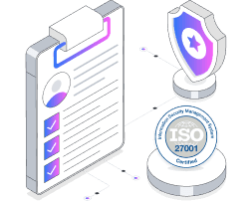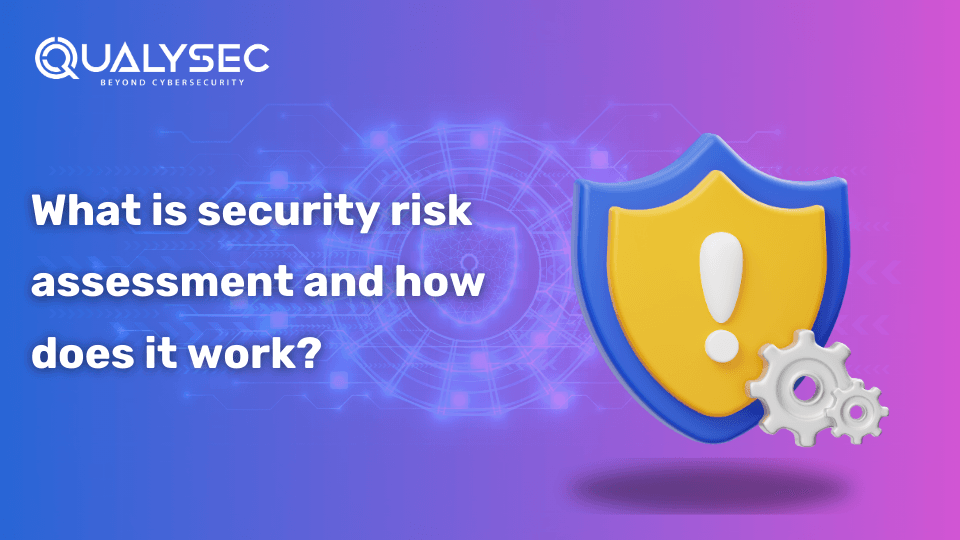What is Security Risk Assessment and How Does It Work?
In the networked digital space, taking care of organizational assets is becoming more of a crucial issue. A security risk assessment becomes a foundational task that aids in the identification and reduction of the effects of the possible sources of threats. It involves multifaceted analysis of impacts and probabilities, and applying strategies to strengthen the defenses. As per IT governance, authorities recorded 2,080,728379 publicly breached data in 2024, which is still increasing. With detailed coverage of the security risk assessment, organizations can strengthen their resilience, achieve compliance, and lessen the effects of security events. In this blog, we’ll study how this fundamental mechanism enhances the current organizational model through adaptation to changing threats. Security Risk Assessment Definition? A security risk assessment is a process of identifying, analyzing, and evaluating strengths, and weaknesses. Additionally, potential threats target organizations’ assets, such as information, technology, staff, and physical infrastructure. It covers the systematic process of risk assessment, that is, measuring the risk probability and its consequences on the organization. This way of assessing security will enable the professionals in this field to bring the importance of risks in order. Hence, methodically develop strategies to get rid of them or to manage them effectively. Performing security risk assessment in advance enables organizations to proactively combat the visibility, manage compliance with the regulation, and lessen the negative effects of security incidents. The protection of the organization at large and its resources is an effort to enhance overall resilience. The Purpose of Security Risk Assessment Cyber Security risk assessment is the key process that helps to specify, examine, and rank possible threats to company resources, operational abilities, and employees. It is mainly monitoring the systems with the view to eliminate any risks whether they are weaknesses or exposure to threats and curtailing their detrimental effects. Identify Assets: These real and abstract resources are important to an organization and need to be safeguarded. These cover applications, IT infrastructure, data, intellectual property, human resources, and so on. Recognize Vulnerabilities: Vulnerabilities are understandable errors in assets or systems that can be exploited by a hacker. These might be technical vulnerabilities such as software bugs or a careless manner of configurations, but also human ones, for instance, social engineering. Identify Risk: Threat assessment is done by taking into consideration the potential harm. Additionally, the threat that is going to be used to exploit a vulnerability to cause damage to an organization. It takes into account the severity of the logical error. The error poses a high risk of exploitation for attacks, and the effects of such exploitation. Remediate Them: Risk mitigation is applied to fix the security loopholes. Find them through testing the system against however many security tools used. This could consist of patching software, updating configurations, deploying security controls, training employees, etc. Verify the effectiveness of remediation by performing an audit. What is the Difference Between Risk Management and a Security Risk Assessment? Aspect Risk Management Security Risk Management Scope and Focus Risk management is not only about anticipation and control of risks. It extends into a wider spectrum, involving the identification, assessment, and prioritization of risks in different areas. It includes financial, operational, and strategic focal points. Security Risk Assessment is a specific subset of risk management. It particularly focuses on security threats and vulnerabilities found within an organization’s infrastructure, systems, and processes. Purpose and Objectives Risk management is aimed at improving the decision-making process. Through the entire and timely risk assessment, bearing in mind the possible effect of identified risks on the business objectives and working out the most appropriate techniques for managing or mitigating these risks. This risk assessment type is commonly called security risk assessment. It aims to determine security vulnerabilities and evaluate their chances of occurrence. Equally, the magnitude of damage that may be caused by them, and then suggest specific measures to make the system more secure against any potential risks. Implementation and Execution Risk management involves the development of a risk management infrastructure. The building up of risk management frameworks, policies, and procedures, and the setting up of a multidisciplinary team that uses tools and methods such as risk registers, scenario analysis, and risk modeling. Security risk assessment in most cases follows a certain structured way that entails asset/threat identification, vulnerability assessment, and risk analysis methodologies. It may include penetration testing, vulnerability scanning, and security audits which can be tailored to meet the specific security requirements. Types of Security Testing Security risk assessment is the most crucial aspect that is used to protect the systems against cyberattacks. It implies the use of different techniques such as penetration testing, vulnerability assessment to review the code, risk assessment, and security auditing. It plays a major role in the identification and mitigation of security risks. Vulnerability Scanning: Vulnerability scans are done usually with the help of automated tools. Organizations can find weaknesses in the software, network, or system as they scan it. It becomes evident that vulnerabilities, such as a forgotten patch, misconfiguration, or weak encryption, could be provoked by the attackers. Penetration Testing: Penetration testing, also known as ethical hacking, replicates actual attacks and helps in assessing the security level of a system. Skilled security experts try to exploit vulnerabilities and in doing so get in without permission. By showing various ways of getting in and recommending how to make the systems stronger. Risk Assessment: Risk assessment is conducted through a process of identifying and evaluating risks and their impact on the stability of the security package. Furthermore, it helps to prioritize security measures by giving the sum of the risk factors such as the chance of happening, the extent of the damage, and defensive strategies contrary to the risk. Security Auditing: The role of a security audit involves the complete overseeing of an organization’s security controls, policies, and strategies. It allows you to verify compliance with security standards, highlight issues, and recommend measures that will improve the security posture. conduct a




